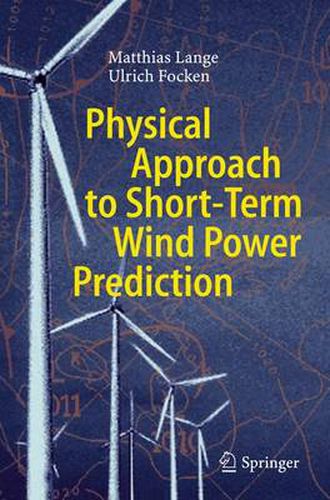Readings Newsletter
Become a Readings Member to make your shopping experience even easier.
Sign in or sign up for free!
You’re not far away from qualifying for FREE standard shipping within Australia
You’ve qualified for FREE standard shipping within Australia
The cart is loading…






This title is printed to order. This book may have been self-published. If so, we cannot guarantee the quality of the content. In the main most books will have gone through the editing process however some may not. We therefore suggest that you be aware of this before ordering this book. If in doubt check either the author or publisher’s details as we are unable to accept any returns unless they are faulty. Please contact us if you have any questions.
Triggered by a discussion on the nature of future electricity supplies, wind - ergy utilisation has boomed dramatically, ?rst in the United States of America and Denmark and later in Germany and Spain. Thanks to state subsidies, it has within 15 years overtaken the volume of the classic renewable hydro-power, and today it accountsforabout5%ofelectricitygeneration. Twofactorssetoffthisdevelopment:anawarenessofthelimitedavailabilityof fossilfuelsandtherecognitionthatinthe19thand20thcenturiesthemassiverelease of fossil CO had kicked off a gigantic climate experiment whose results remain 2 unpredictable. The discussion on the side effects of the wind energy boom, such asoccupationoflandandthechallengespresentedbyintegrationintoconventional electricity generation systems, frequently distract attention from the real goals and bene?ts of this technology. These are establishing an energy sector that will, in the shortterm,reduceCO emissionsandtheexploitationof?niteresourcesand,inthe 2 longterm,createanunlimitedsustainableenergysupply. Because fossil reserves are relatively easy to exploit, a system developed that could hardly be more convenient. It makes electric power available in large quan- tiesatmoderatepricesandinawaythatiseasytoplan.Thetaskofthepowerutility is essentially limited to uncritically adjusting the supply from central power s- tionstothedemandfromconsumers.Alow-CO sustainableenergysectordemands 2 differentstandards.Windandsolarpowerhaveahighpotential,buttheyaresubject tohighnatural?uctuationsand,ingeneral,areconnectedtotheelectricitygridina decentralway.Theshareoffuturestoragetechnologiessuchashydrogentechnology willbeassmallaspossibleforreasonsofef?ciencyandcost. So,future-compatibleelectricitygenerationwillcomprisemanydifferent,partly innovative components, which also demands a considerable research and devel- menteffort.Ontheonehand,thereisthe?uctuatinginputfromrenewablesources, and on the other, electricity consumption that must to a certain extent be adjusted to supply by means of intelligent solutions. In between, to a declining extent, VI Foreword modernconventionalenergyproducers,suchascoalandnaturalgaspowerstations, areallbroughttogetherwithagreatdealoftechnicalingenuityintheformofcontrol strategiesandinformation?ows.
$9.00 standard shipping within Australia
FREE standard shipping within Australia for orders over $100.00
Express & International shipping calculated at checkout
This title is printed to order. This book may have been self-published. If so, we cannot guarantee the quality of the content. In the main most books will have gone through the editing process however some may not. We therefore suggest that you be aware of this before ordering this book. If in doubt check either the author or publisher’s details as we are unable to accept any returns unless they are faulty. Please contact us if you have any questions.
Triggered by a discussion on the nature of future electricity supplies, wind - ergy utilisation has boomed dramatically, ?rst in the United States of America and Denmark and later in Germany and Spain. Thanks to state subsidies, it has within 15 years overtaken the volume of the classic renewable hydro-power, and today it accountsforabout5%ofelectricitygeneration. Twofactorssetoffthisdevelopment:anawarenessofthelimitedavailabilityof fossilfuelsandtherecognitionthatinthe19thand20thcenturiesthemassiverelease of fossil CO had kicked off a gigantic climate experiment whose results remain 2 unpredictable. The discussion on the side effects of the wind energy boom, such asoccupationoflandandthechallengespresentedbyintegrationintoconventional electricity generation systems, frequently distract attention from the real goals and bene?ts of this technology. These are establishing an energy sector that will, in the shortterm,reduceCO emissionsandtheexploitationof?niteresourcesand,inthe 2 longterm,createanunlimitedsustainableenergysupply. Because fossil reserves are relatively easy to exploit, a system developed that could hardly be more convenient. It makes electric power available in large quan- tiesatmoderatepricesandinawaythatiseasytoplan.Thetaskofthepowerutility is essentially limited to uncritically adjusting the supply from central power s- tionstothedemandfromconsumers.Alow-CO sustainableenergysectordemands 2 differentstandards.Windandsolarpowerhaveahighpotential,buttheyaresubject tohighnatural?uctuationsand,ingeneral,areconnectedtotheelectricitygridina decentralway.Theshareoffuturestoragetechnologiessuchashydrogentechnology willbeassmallaspossibleforreasonsofef?ciencyandcost. So,future-compatibleelectricitygenerationwillcomprisemanydifferent,partly innovative components, which also demands a considerable research and devel- menteffort.Ontheonehand,thereisthe?uctuatinginputfromrenewablesources, and on the other, electricity consumption that must to a certain extent be adjusted to supply by means of intelligent solutions. In between, to a declining extent, VI Foreword modernconventionalenergyproducers,suchascoalandnaturalgaspowerstations, areallbroughttogetherwithagreatdealoftechnicalingenuityintheformofcontrol strategiesandinformation?ows.